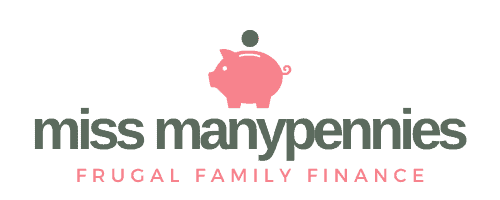Why Using a Spending Tracker Can Help You to Get Out of Debt
Posts contain affiliate links, see disclosure for more details.
It’s so easy to get to the end of the month, and wonder where our money has gone, even if we don’t feel like we’ve been spending much! Those little things we don’t necessarily think about – a coffee here, a lunch out there – can all add up over time even though individually they don’t cost much. This guest post from Miss Penny Money shows how using a spending tracker can be really helpful for budgeting, especially when you’re trying to get out of debt.
![]()
When you’re trying to get out of debt, managing your finances can be a bit of a minefield. Even if you’ve budgeted for everything, it still seems that you’re trying to claw money back from leaking here, there and everywhere. Despite your budget, it’s essential to monitor your money. Here’s why using a spending tracker can help you to get out of debt.
Where does it go?
Even if you have drawn up a budget, it’s still not difficult to overspend. By using a spending tracker, you’ll be able to see where your money is really going. You need to begin by listing absolutely EVERYTHING that your money goes on.
That’s all of your fixed expenses (bills, etc), variable expenses, money that goes into savings, and regular daily spends. When I say regular daily spends, I mean absolutely everything that you buy. Whether you pay by card, or pay by cash, make sure you obtain an itemised receipt. Do this for one week, listing by category (e.g. bills, travel expenses, food, drinks, items for the home, items for the garden, clothes, personal grooming, drinks out etc). At the end of the week, add up the different spends per category to see where your money is going.
If you use a digital bank, these often have great apps that can also give you a good insight into your spending.
What are your spending habits?
Repeat the above for each week of the month, and once you have a month’s worth of spending data, you’ll be able to notice patterns and see where most of your money is going. This will establish whether you are an emotional spender, or perhaps over-spending on food (despite having a budget and doing a supermarket shop, it’s not uncommon to nip to the shop to get a few bits and buy more than you need).
Add up the category totals for the whole month to determine where the most of your money is going, and whether there is an area you need to work on, or cut back on.
What type of spending tracker should you use?
As budgeting becomes more and more popular with those on a journey to become debt-free, there are several options available to you. You could buy a budget planner and spending tracker, or you could make your own using a bullet journal. There is also a free budget planner printables tool on the Miss Penny Money website that you can download when you subscribe (look under the Freebies tab).
Whichever method you decide to use, it’s personal to you and needs to work for you. But as you get into the habit of recording your spending (something our parents and grandparents used to do as a matter of course!), you’ll be much more conscious of where you money is going and if you have a tendency to overspend.
A spending tracker will show you exactly where your money is going. As well as being able to see how much you need to allocate for each category in your budget, you can see where you need to make amendments. You can avoid the trap of overspending and getting further into debt.
If you find that despite cutting back in as many areas as possible, you could look at increasing your income. If you are still struggling and need professional help with your debts, contact stepchange.org, or nationaldebtline.org.
Read more:
- 5 Reasons You’re Poor And How To Go From Spender To Saver >>
- 17 Things To Cut From Your Budget To Save Money >>
- All The Money Saving Tips You Need To Save Money Every Day >>
Pin it!
![]()






